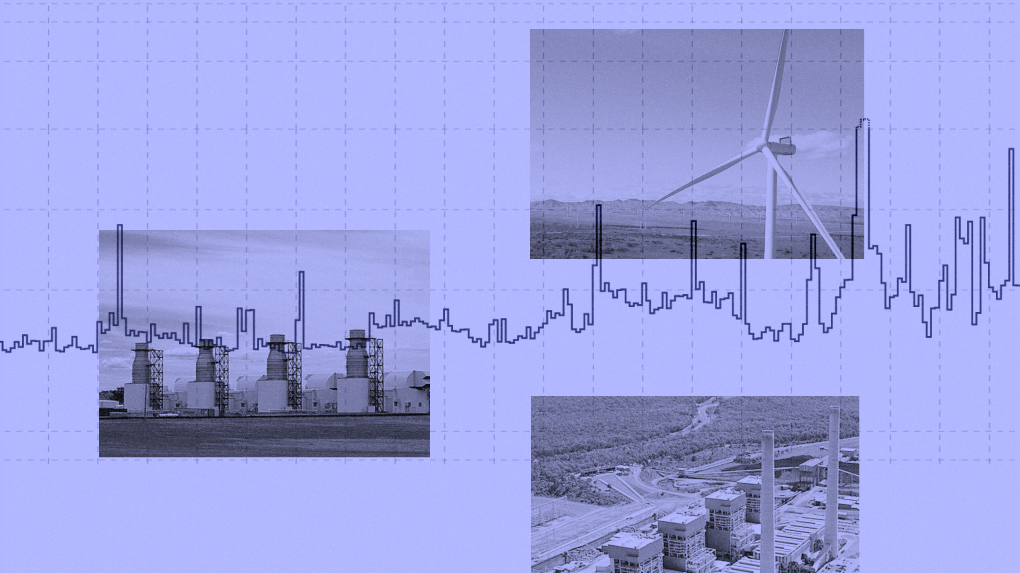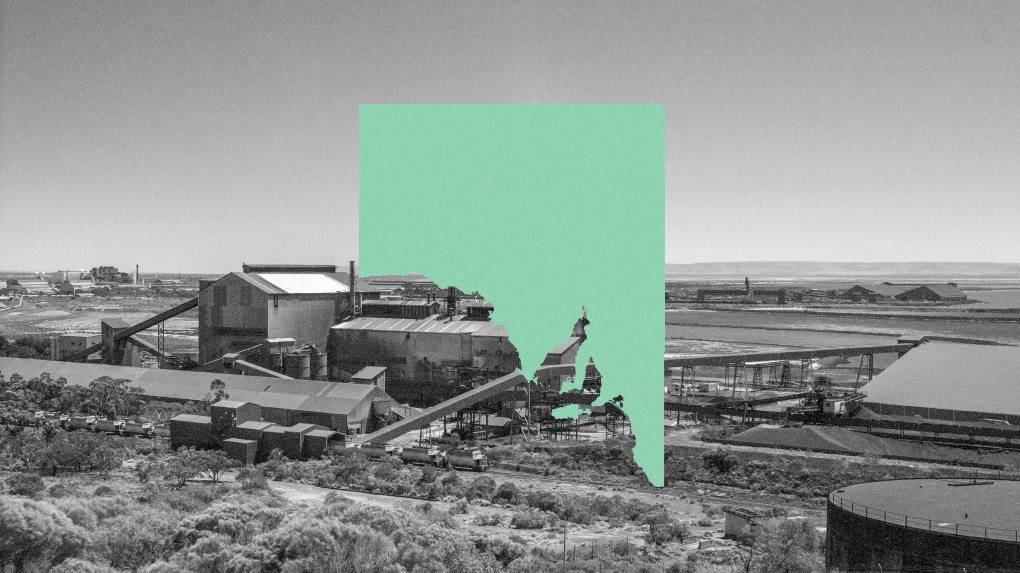Transcript
Thank you to The Faculty for the invitation to speak today at this important event. Given the recent budget the title of this session, “Navigating the transition to clean energy”, is timely.
My focus today will be on the Future Made in Australia program. In particular, I am drawing on the National Interest Framework put out as a supporting paper with the Budget by the Commonwealth Treasury.
It is an important read.
Prior to the budget I was sceptical of a Future Made in Australia. In early discussions with the organisers of this conference I said I would make a plea for sound economics to apply.
I now see that sound economics has been applied in the Treasury document.
We are all often critical of our governments. When they get it right we should applaud.
Indeed, in my view the Future Made in Australia program represents a growth and productivity opportunity every bit as bold as seen under previous governments. Further, the Future Made in Australia program has significantly more scope to reduce world emissions than decarbonising Australia.
I have heard the Future Made in Australia program described in many ways by its supporters.
One line is a welcome return to activist industry policy and making more things and value adding in Australia. Despite what has been said for political reasons, this is not the logic driving the Future Made in Australia program as described by Treasury.
We do not need to revisit old and tired debates.
But making more things in Australia will be an outcome.
I have also heard it said that it represents the end of “neo liberalism” and a return to interventionist thinking. It is not that either. The Future Made in Australia program relies on sound economics, and any change in economic thinking is a return to the application of sound economics.
Then it is said that it is about some local production in necessary supply chains. There is an element of this, as local battery and solar panel manufacture are mentioned, but they are a small part of the program.
Again, some supply chain security can be an outcome, but it is not the driving logic.
Then it is said that we are copying the United States and its Inflation Reduction Act (IRA). This is incorrect. The IRA spreads money widely, whereas the Future Made in Australia program is targeted to Australia’s circumstances. The IRA also has many destructive features that we will not copy, such as its protectionist approach.
The critics, and there are many, say that this Government is turning its back on the Hawke/Keating legacy, with its return to the failed formula of picking winners. This critique completely misreads what is going on here.
To be fair to all of the above, the policy’s introduction was poorly handled. It was linked to making solar panel modules, when they can be purchased much more cheaply from China, and then there was the announcement of $1bn for quantum computing.
It all seemed ad hoc.
The Treasury Framework document has brought discipline and clarification. It is soundly based, as you would expect from our Commonwealth Treasury.
Incidentally, with solar modules, Australian scientists and Australian-trained entrepreneurs have played major roles in innovation to secure the huge reductions in costs and prices that we have seen over the past two decades. Australians continuing to contribute to the global climate mitigation effort in this way warrants support.
But it helps neither global mitigation nor Australian development to force manufacture here if the final products are produced most cost-effectively elsewhere.
The Superpower industries
The Treasury document focuses on what are called the Superpower industries.
These are industries that need product inputs in which Australia will have a continuing comparative advantage because of our low cost solar and wind resources, our associated ability to make low cost hydrogen and our plentiful supply of low cost biomass needed for sustainable carbon.
Australia has benefited enormously from its coal and gas resources. Many worry what will happen as these industries decline. Some do not want them to decline and are actively seeking to prevent this.
But Australia has likely the world’s best combinations of solar and wind energy resources, and much more land to deploy them than other countries with excellent natural resources. Our low cost of capital and human skills gives us advantages over developing countries with rich renewable energy resources.
And Australia has enormous potential sources of biomass for a zero emissions chemical industry.
Renewable energy and hydrogen are expensive and difficult to export, so it makes economic sense for a range of energy intensive industries to now be located in Australia.
Take the example of iron metal. Australia currently exports the iron ore, the metallurgical coal used to reduce the iron ore to iron metal, and both thermal coal and gas which can be the heat sources for the iron making process. Australia is the largest exporter of the first two products, and is a major exporter of the latter two.
Some have long said, and are still saying, that we should use all these Australian ingredients and make iron metal in Australia now. We should be value adding. But there is no logic to government intervening in the choices the market has made; it is best for Australia in the fossil carbon world to do as we are.
In the coming zero carbon world, however, it makes economic sense to make green iron in Australia.
Green iron will very likely need green hydrogen as the reductant that converts the iron ore into iron metal. Making green hydrogen requires a massive amount of renewable energy to power electrolysers that separate the H2 (Hydrogen) from the O (oxygen) and to provide the heat for the green iron making process.
Green iron should be made in Australia simply because the economics flip in the net zero world. Exporting metallurgical coal raises its cost by around 10% while exporting hydrogen more than doubles its cost via a complex and difficult process. Likewise, renewable energy should be used close to where it is produced as it is also difficult and expensive to export.
All overseas studies that I am aware of suggest that Australia is likely the cheapest place in the world to make green iron. And those seeking to make green iron by importing hydrogen, those studies say, will be uncompetitive.
The world needs Australia to make many green products because we have massively more low cost renewable energy resources than we need. We can be an exporter of energy intensive green products.
Japan, Korea, China, and most of Europe, accounting for over 40 percent of global emissions, do not have sufficient even moderate cost renewable energy resources to make all the electricity they need domestically. They will need to either import renewable energy, ammonia as a derivative of hydrogen, and/or use nuclear energy - all at great cost – simply to meet their domestic electricity needs.
It follows that they will need to import many goods with the green energy embedded in them to meet their climate targets. Australia’s advantages relative to the rest of the world are such that we can materially improve the prospects of achieving the world’s climate objectives.
In addition to our just over 1% of world emissions now occurring in Australia, we could remove around another 6-9% of global emissions that other countries will find very difficult to abate by making, for example, green iron, green aluminium, green transport fuels, green urea and green polysilicon in Australia.
By turning our iron ore into green metal alone Australia would reduce world emissions by over 3%; triple the contribution to world emission reduction from decarbonising Australia.
Australia covers about 5% of the earth’s land surface; supplying about 7-10% of the world’s renewable energy is no stretch given our abundant solar, wind and land resources.
Indeed, if Australia seizes the opportunity it can repeat the experience of the China resources boom which peaked around 10 years ago. But this time the opportunity can be sustained, rather than boom and bust, and we can manage it better for broadly based development.
But we must be externally focussed.
Under the Hawke Government Australia went from being insular and inward-focussed to an externally focussed economy determined to take advantage of the coming
Northeast Asian ascendancy. We reduced tariffs, removed bottlenecks and benefitted from the huge growth to come from our near neighbours.
We can again benefit provided we remain externally focussed. And China will be a crucial partner, not a threat.
An important role for government
To realise this opportunity there is an important role for government, as befits the huge transition and this opportunity. We should apply logic, not prejudice.
The Government’s role is to unlock private sector investment by addressing clear market failures. Left unaddressed the market on its own will pick losers.
First, the Government says it will address the negative externality associated with the damage caused by carbon emissions. It is silly that we want to reduce emissions, but we do not want to use a price incentive to do this. So green products are currently more expensive than products made with fossil fuels because the latter do not pay for the damage they cause. This needs to be addressed in some way.
Indeed, I hear many people say “leave it to the market”. Why bother with green iron when black iron, using coal or gas, is cheaper? But this is not competition on the merits, or a level playing field.
Black iron, made from coal or gas, is not paying for the damage done to others from climate change. Damage to everyone’s standard of living and security. The most basic economics says that it should.
The budget provides a Hydrogen Production Tax Incentive of $2 per kilogram for green hydrogen between 2027/8-2039/40 for projects that reach final investment decision by 2030.
This is essentially to address the lack of a price on carbon.
This recognises that hydrogen will be a vital feedstock for use in Australia making green iron, transport fuels and urea, as examples.
Second, the Government is addressing the positive externality from the benefit to others by the early movers taking new technology to scale for the first time. The benefits to others are the expensive learning by doing, with benefits to followers that the original investor cannot capture.
This again is basic economics. Assistance under this heading is necessarily short term, not long lasting.
While most of the $22.7bn allocated so far for the Future Made in Australia program will go to production credits for hydrogen and critical minerals, and early stage innovation, the Budget signals further funding to address the two market failures mentioned above in other areas.
The Budget says there will be further consultation on new specific policies that will be needed to promote green iron/steel, green alumina/aluminium and green aviation and shipping transport fuel production in Australia. There will clearly be more money available in addition to what is allocated in this Budget to address the effect of the market failures in these sectors.
Third, the policy recognises a need for the public sector to play a role in providing the ‘natural monopoly’ services such as hydrogen storage and transport, and electricity transmission, given that supply needs to be built ahead of demand, and that all should be able to connect into these systems.
Fourth, there is a recognition of a commitment to open trade, which as we all here know has been the underpinning of Australia’s past success.
This means we should not follow the USA Inflation Reduction Act approach of being inward looking and protectionist. Australia’s best approach for its own prosperity and to make the largest contribution to world emission reduction is to be outward focused, relying on the lowest cost inputs from around the world.
Indeed, China will be a key partner for Australia as I have said. It produces low cost solar panels, windfarm equipment and batteries, as well as electric vehicles. China has contributed a great deal to costs falling dramatically worldwide, and will continue to do so.
Finally, the Budget recognised the need to boost resources and adjust procedures so that approvals processes for projects are considerably streamlined. They can be, while ensuring vital First Nations and environmental issues are appropriately dealt with. There is no logical reason why Australian project approvals take as long as they do.
The need to fast track project approvals was recognised with $134m allocated to facilitate faster approval decisions.
Let’s return to the initial criticism of a Future Made in Australia. Is the Government “picking winners”?
In a way, yes it is. Necessarily, since there is no carbon price in Australia, and no world carbon price, although the EU’s CBAM is perhaps the beginning.
The Government cannot afford to fund the lack of a carbon price in all sectors, so it is doing it in the sectors it judges most require this. These are sectors where Australia will have a comparative advantage in the net zero world due to our low cost renewable energy and land resources.
The Government is picking sectoral winners, while it seems to be avoiding picking individual firms as winners. The allocation of resources through general rules applicable to all can avoid the rent-seeking behaviour and other costs of picking individual firms.
What was the Government’s alternative? Let green hydrogen and related products in Australia compete against products made with gas or coal, with no allowance for the damage to the environment that these products cause?
I think the Government had no choice in doing what it has done, and it is putting the effort into the right sectors.
The eventual need to tax fossil fuels
Of course, all of the above needs to be paid for, particularly in the future as needs grow.
Australia must maintain a strong budget position to ensure Australia has a low cost of capital given that the products mentioned above are extremely capital intensive.
With this in mind Ross Garnaut and I have recommended the introduction of a Carbon Solutions Levy (CSL) at all fossil fuel extraction sites in Australia (around 105 sites), and on all fossil fuel imports to Australia.
We urge the CSL’s introduction by 2030-31 at the latest as expenditure ramps up. We have suggested that the CSL be imposed on all emissions from Australian fossil carbon extraction wherever they occur in the world, at the level of the EU’s carbon price (five year inflation-adjusted average, currently around $90 per tonne of emissions).
To avoid a double imposition, sales to any country with arrangements that impose a penalty on the carbon content of imports, as the EU’s Carbon Border Adjustment Mechanism (CBAM) will do from 2026, from which Australian zero-carbon goods can benefit, would receive a rebate for those sales.
We hope that by 2030, our major trading partners in Northeast Asia would qualify for exemption so that Australian zero carbon goods are competing widely on a level playing field with products that contribute to global warming.
In this way we hope that the CSL can encourage countries beyond the EU to adopt their own systems for generating green premia for Australian exports and their own CBAMs.
We have also suggested that an amount of the CSL proceeds should be kept for budget repair or funding structural reform, such as tax reform.
Increasing taxes is very difficult to impossible in Australia. But I believe the logic for taxing fossil fuels is the strongest, and so provides our best chance of seeing the higher tax levels Australia needs.
A growth and productivity agenda, as well as Australia’s best contribution to reducing world emissions.
The approach to a Future Made in Australia described here, which focuses on the green export “Superpower” opportunity, can bring enormous benefits.
If Australia achieves green energy intensive exports at the lower end of the 6-9% it can, over time, achieve additional export revenue of $250-300bn per annum.
This is way greater than the $120-220bn per annum revenue we receive from coal and gas exports, which will decline over time.
We will also see higher productivity as more resources are employed in sectors in which Australia has strong comparative advantage and that will see continuing change and learning.
There will be higher paying, sustainable jobs as our scarce labour is directed to sectors that can compete internationally, rather than in ones that cannot and are constantly under threat.
The benefits will flow widely, including to those outside our cities. There will be more Indigenous employment as our best solar resources are up north.
The Superpower industries can also help strengthen Australia’s supply chains.
This is by outcome, not design.
If Australia can make green aviation and shipping fuel, green polysilicon, processed green metals, and green fertiliser (urea) then we will be self-sufficient in areas vital to our economy. But we will be doing this in areas where we have a comparative advantage as these products variously need renewable energy, hydrogen and biomass, which Australia has and can make at the lowest cost.
More, Australia will have a clear sense of direction.
This prompts a further thought. Some argue the world will not decarbonise sufficiently for there to be significant demand for the green products described above. Very many scientists would see this as an existential threat.
But this also ignores the contribution Australia can make to convincing the world to deal with climate change.
Australia can help show the world that we can decarbonise products that our society relies upon, such as metals, transport fuels, polysilicon and fertiliser, in an economic way, and that increasingly, costs will fall as scale grows.
As I have said, Australian production can reduce world emissions by 6-9%. Those who say that Australia cannot make much of a contribution to dealing with climate change are so wrong.
Final thought
Finally, I find that people’s approach to economics is always affected by their values. For example, the receptiveness of people to what I have outlined today will in part depend on their attitude to climate change.
While those who want action on climate change tend to support all climate measures, even if on occasion their logic is dubious, the reverse applies.
People who do not accept the science, or the urgency, will question the need for the government role I have outlined. They want, for example, the cheapest goods to be used without regard to the damage fossil fuels do to our environment and our economy.
Further, they often want to maintain our reliance on fossil fuels, as indeed the extreme elements of the Government’s gas strategy sought to do when it referred to gas playing a role to 2050 and beyond. The Future Made in Australia program allocates fiscal resources to the legitimate Superpower externalities but not to gas projects for which there is no public interest case.
The overwhelming majority of scientists favour phasing out fossil fuels quickly. If you are not convinced by this then consider the precautionary principle; any chance of a catastrophic outcome should be avoided.
And whatever you think, all of our trading partners have agreed to move to net zero, and most are making progress towards that goal. It happens that this creates great economic opportunities for Australia. We do not want our “Kodak” moment. We have an opportunity to get ahead of the curve, not stay behind it.
Thank you for your attention today.
Rod Sims
Chair, The Superpower Institute
Rod Sims is Enterprise Professor at the Melbourne Institute of Applied Economic and Social Research, Faculty of Business and Economics, University of Melbourne, and Chair of The Superpower Institute. He previously chaired the ACCC (2011-2022), served as Deputy Secretary (Economic) in the Department of Prime Minister and Cabinet, and Principal Economic Adviser to PM Bob Hawke (1988-1990).



